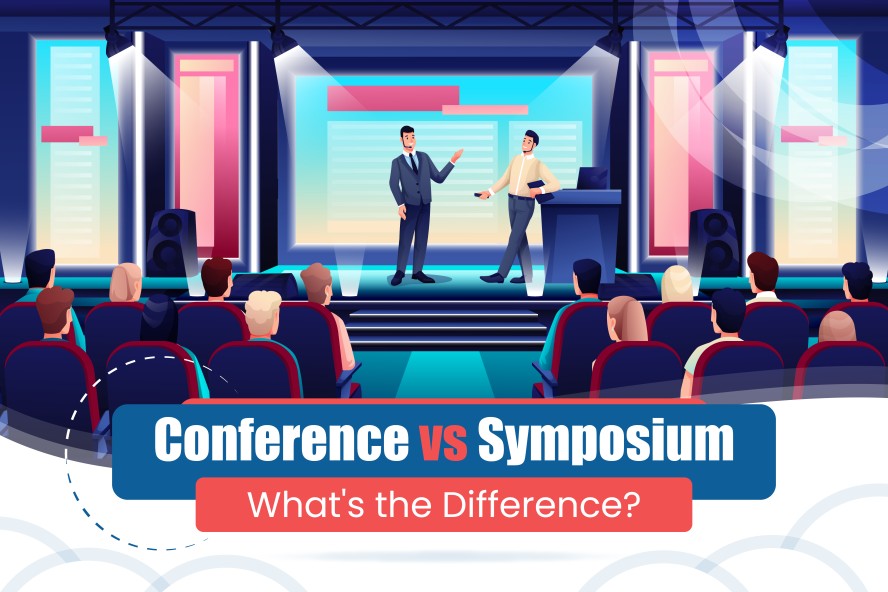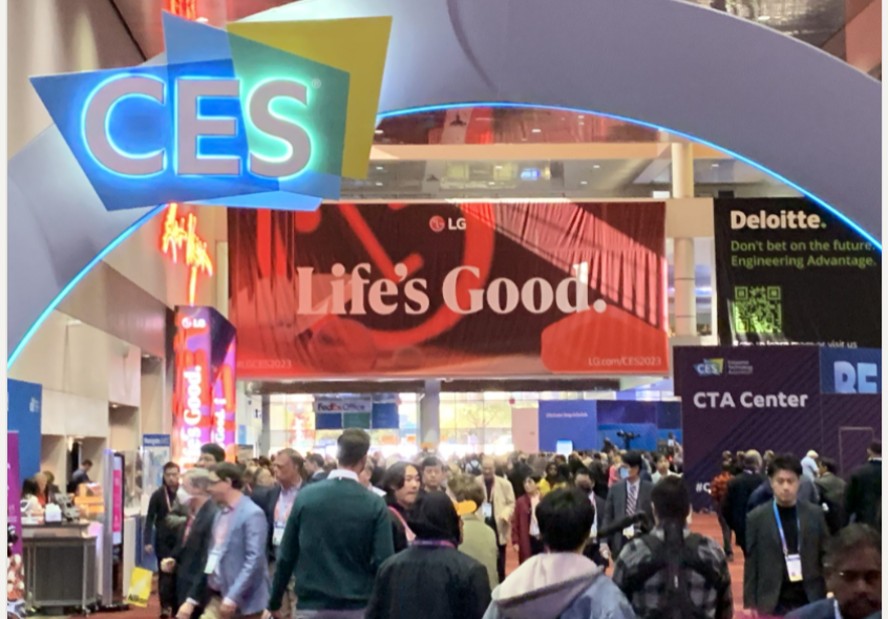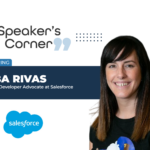
Welcome to the realm of professional networking and knowledge exchange—conferences and symposiums. In the dynamic landscape of B2B marketing, these events serve as invaluable platforms for fostering connections, sharing insights, and driving innovation. In this analysis, we’ll find the unique features of Conference vs Symposium and highlight their roles in spreading new ideas.
Let’s discover how these events shape the academic scene and contribute to knowledge growth. Read along!
What is a Conference?
A conference is a gathering where people come together to discuss and share information on a specific topic. It’s like a big meeting where experts, professionals, or businesses discuss ideas, present their work, and learn from each other. For example, THE CES (Consumer Electronics Show).

CES is an annual conference in Las Vegas that brings together companies from the technology and consumer electronics industries. Businesses showcase their latest gadgets, innovations, and technological advancements at CES, which serves as a platform for networking, establishing partnerships, and staying informed about cutting-edge developments in the tech sector. This conference provides a valuable opportunity for B2B interactions, allowing companies to connect, collaborate, and stay at the forefront of the rapidly evolving consumer electronics market.
If you’re about to attend your first conference and wondering how to pack for it, check out this list of 17 Must-Have Items.
What is a Symposium?
A symposium is a special kind of meeting where experts gather to discuss and exchange ideas on a specific topic. It’s like a focused discussion or seminar where participants share their knowledge and insights. Unlike a conference, a symposium is often more intimate and involves in-depth conversations. For example, the “World Economic Forum Annual Meeting” held in Davos, Switzerland.

This symposium brings together global leaders, business executives, and policymakers to discuss pressing economic and social issues. In a more focused and collaborative setting, participants explore solutions, share perspectives, and build relationships. The symposium format allows for deep dives into specific topics, encouraging meaningful participant interactions.
Conference vs Symposium – Key Differences
Basis | Conference | Symposium |
Purpose | Conferences serve as expansive platforms for professionals, experts, and businesses to share a wide range of knowledge, research findings, and industry updates. They facilitate networking, showcasing innovations, and exploring diverse topics within a field. | Symposiums are more focused gatherings designed for in-depth exploration of specific subjects. They aim to foster intensive discussions, exchange profound insights, and provide a forum for experts to delve into a particular theme or issue. |
Scale | Conferences are typically larger in scale, drawing a diverse audience from various sectors and backgrounds. Due to their size, they offer numerous parallel sessions, workshops, and presentations. | Symposiums are often more intimate, featuring a smaller and targeted audience. The limited scale allows for a closer-knit group, fostering meaningful interactions and deeper engagement among participants. |
Format | Conferences incorporate various formats, including keynote speeches, panel discussions, workshops, and poster presentations. The diverse agenda accommodates a wide array of topics and interests. | Symposiums lean towards a more focused format, emphasizing discussions, panels, and presentations directly related to the chosen theme or subject. This format encourages participants to delve deeply into specific topics. |
Scope of Topics | Conferences cover a broad spectrum of topics within a particular field or industry. This inclusivity allows for the exploration of various trends, advancements, and research findings. | Symposiums have a narrower focus, concentrating on a specific theme, issue, or subject area. The aim is to understand the chosen topic through concentrated discussions and exploration. |
Interaction | Conferences provide networking opportunities, but the larger scale may limit direct interaction among participants. | Symposium prioritizes direct engagement, encouraging participants to actively contribute to discussions and engage in meaningful dialogue with experts in the field. The smaller setting enhances collaboration and interaction. |
Duration | Conferences can span several days, accommodating a diverse agenda with multiple sessions and activities. | Symposiums are typically shorter in duration, focusing on in-depth exploration over a more condensed timeframe. This format allows for a deep dive into the chosen topic without the need for an extended event. |
Examples | The International Conference on Machine Learning (ICML) is an example of a conference on artificial intelligence and machine learning. | Jackson Hole Economic Policy Symposium, organized by the Federal Reserve Bank of Kansas The city gathers central bankers, policymakers, economists, and financial experts in Jackson Hole, Wyoming. The symposium focuses on in-depth discussions related to economic policy, monetary matters, and global economic challenges.]. |
1. Purpose
Conferences are like big meetings where many people gather to discuss many different things in a particular field, like technology or science. The main purpose of a conference is to share a wide range of ideas, research, and updates. An example of a conference is the “Web Summit,” where professionals from the tech industry gather to discuss various aspects of technology, digital innovation, and entrepreneurship.

At Web Summit, you might find sessions on artificial intelligence, cybersecurity, and startup strategies, creating a diverse platform for learning and networking.
Symposiums are special meetings that focus on a specific topic or theme. They are like deep-dive discussions where experts come together for detailed conversations. An example of a symposium is the “International Symposium on Climate Change and Sustainability.” In this symposium, experts from around the world come together to focus specifically on climate change-related issues. They discuss topics like sustainable practices, environmental conservation, and climate policy in a more concentrated setting, allowing for in-depth conversations and collaboration on the specific theme of climate change and sustainability.
2. Scale
Conferences are generally more significant events with a broader scope, hosting many speakers and participants. For example, the “Global Leadership Summit,” where leaders from diverse fields gather to discuss leadership strategies, personal development, and global challenges. This summit, with its broad scope and multitude of sessions, resembles a lively city where each street represents a different aspect of leadership, providing participants with a vast landscape to explore.
Symposiums are more like a close-knit club of experts discussing a specific topic. Unlike conferences, they’re smaller, allowing for a more focused and intimate setting. For example, the “Symposium on Advances in Genomics and Medicine” brings together scientists and researchers to explore the latest advancements in genetics and medicine in depth. Because symposiums are smaller, everyone can actively participate in the discussions, making it feel like a close conversation among friends who are deeply passionate about the same subject.
3. Format
Conferences are like big events with lots of things happening at the same time. It’s like a busy town with various streets, each representing a different topic. For example, think about the “Tech Expo,” where you have one area for new gadgets, another for software, and maybe a stage for talks about the future of technology. Conferences often have many rooms and sessions running concurrently, so you can pick and choose what you want to see based on your interests. It’s like having multiple TV channels playing different shows, and you decide which one to tune into.
Symposiums are more focused and concentrated, like a small group discussion or a single TV channel airing in-depth content.

For example, the “Medical Research Symposium” is where scientists gather to talk specifically about the latest advancements in medical research. Unlike conferences with multiple tracks, symposiums have fewer sessions, creating a more detailed exploration of a particular topic. It’s like reading one book that goes deep into a specific subject, allowing participants to engage closely with the material. The format is tailored for a more intimate and thorough understanding of the chosen theme.
4. Scope of Topics
Conferences cover a broad range of topics, like different sections in a bookstore where you can pick up books on various subjects. For instance, at the “Science and Technology Conference,” you might find talks on space exploration, new inventions, and environmental sustainability. If you’re an attendee, here are 27 Conference Tips for Getting the Most Out of Your Attendee Experience.
Symposiums are more like specialized workshops where people deeply dive into one particular subject. While there usually are one or two keynote lectures, the sessions of a symposium tend to involve more formal discussions and fewer single-speaker presentations than a conference typically would. For instance, a “History Symposium” where historians gather to discuss a specific era or event. The “History Symposium” allows participants to examine and discuss details about that particular historical period thoroughly. It’s like having a book club meeting where everyone reads and talks about the same book, delving deeply into the chosen topic.
5. Interaction
Conferences are like big gatherings where you can meet many people, but it’s a bit like a busy marketplace. Let’s say there’s a “Business Conference” where professionals from different industries come together. There are lots of booths and presentations, and you can walk around to meet various people. However, because there are so many attendees, it can be a bit like trying to chat in a crowd. You can exchange business cards and have quick conversations, but it might not be as easy to have deep discussions with everyone. To crack this situation, check out our Ultimate Guide to Successfully Attending a Conference for the First Time.
Symposiums are more like a close group of friends discussing a specific topic. Imagine there is an “Environmental Symposium” where experts focus on environmental issues. It’s a smaller gathering, like sitting around a table with friends to talk. You can have more meaningful conversations with the participants at a symposium because it’s a smaller and more focused setting. It’s like being part of a book club where everyone is passionate about the same book, and you can really engage in thoughtful discussions with others who share your interests.
6. Duration
Conferences are like week-long festivals of learning and sharing. Think of it as a big fair where you can explore different rides, but instead, it’s sessions and workshops. This might go on for a few days, with various talks and activities happening continuously. If you’re a speaker, check out our article How to Speak at a Conference: 10 Tips to Become a Successful Speaker, before your next conference.
Symposiums are focused gatherings that take less time. They’re like shorter journeys where you spend concentrated time exploring a specific topic. The symposium format is like a quick, intense dive into a subject, allowing participants to get a thorough understanding without the need for a longer event.
Despite these distinctions, both conferences and symposiums serve as platforms for knowledge exchange, collaboration, and professional development in academia. They provide opportunities for researchers to showcase their work, engage in scholarly discourse, and forge connections with peers. While conferences and symposiums differ in their scale, scope, and target audience, they share the common goal of fostering intellectual exchange and advancing scholarly pursuits.
How to Network at a Conference and a Symposium
One of the key aspects of attending a conference or a symposium is to network and build connections. Whether it’s discovering potential collaborators, seeking career opportunities, or exchanging ideas, networking remains integral to professional growth and development. The global conference and event planning market plays a pivotal role in this dynamic landscape. Estimated to be worth $1.1 trillion in 2019, this industry is projected to reach $1.4 trillion by 2027, according to a survey by Statista. This indicates substantial growth and opportunities for both organizers and attendees alike.

Networking is all about being present and interactive at a place; however, a few certain details differentiate this experience from a Conference vs a Symposium. Let’s explore how-
At a Conference
Think of a big tech conference filled with people excited about new ideas. Say you just heard a cool talk about AI. During breaks, go to the coffee area and chat with others. You might say, “That AI talk was awesome, right?” Exchange cards and connect on social media to keep the conversation going after the conference. It’s like making friends at a huge event where everyone loves the same things. For more tips, check out our article on How To Network At A Conference: 13 Ways To Build Solid Business Connections.
Here are a few steps you can take to network at a conference:
- Plan Ahead: Look at the conference schedule in advance and identify sessions, speakers, or exhibitors you’re interested in. This will help you target specific networking areas.
- Attend Social Events: Many conferences organize social events, such as dinners, receptions, or networking mixers. Attend these gatherings to meet people in a more relaxed setting.
- Use Social Media: Follow the conference’s social media channels and engage in discussions using event hashtags. This is a great way to connect with fellow attendees and speakers before, during, and after the conference.
- Visit Exhibitor Booths: Explore the exhibition area and engage with companies or organizations. This is an opportunity to learn about new products and services and potentially establish professional connections.
- Ask Questions: Don’t hesitate to ask questions or share your thoughts during sessions. This can spark conversations with other participants who have similar interests.
At a Symposium
Imagine you’re at a small environmental gathering, like a close-knit club of nature lovers. During breaks, grab some coffee and chat with folks who care about the same green stuff. Picture a group chat about saving the planet. Swap contact info, like sharing secret handshakes. Engage with the speakers like you’re chatting with friends. It’s like being in a small group where everyone is super into the same book – forming connections that last beyond the meeting.
Here are a few more steps to network at a symposium:
- Participate Actively: Since symposiums are more intimate, actively participate in discussions and share your insights. This can help you stand out and be remembered by other participants.
- Collaborate During Breaks: Take advantage of breaks between sessions to initiate conversations. The smaller setting allows for more meaningful interactions; you might find common ground with fellow participants.
- Exchange Contact Information: Be ready to exchange business cards or contact information with individuals who share your professional interests. This facilitates follow-up communication after the symposium.
- Engage with Speakers: Symposiums often feature experts in a specific field. After their presentations, approach speakers to ask questions or share your thoughts. This can lead to valuable connections.
- Join Roundtable Discussions: If the symposium includes roundtable discussions, consider joining them. These smaller group settings provide an excellent opportunity for focused networking and idea exchange.
Key Takeaway
In wrapping up our exploration of conferences and symposiums, remember that each serves its unique purpose in the world of knowledge exchange. Whether you’re exploring many topics at a conference or diving deep into one subject at a symposium, both are great ways to connect with like-minded people. To enhance your event experience even more, you can check out these 7 Best Conference Apps: The Must-Have Tools for Event Attendees.
Remember to exchange contact info, both the traditional business card way and the modern LinkedIn connection. Also, to learn more about different event formats and their differences with Conferences, you can check out our article on Conference vs. Seminar vs. Workshop: What’s The Difference.
If you’re curious to stay in the loop about all things event, visit our site, Eventible. There, you’ll find a treasure trove of the latest information in the event industry. Happy learning and connecting!




Comments are closed.